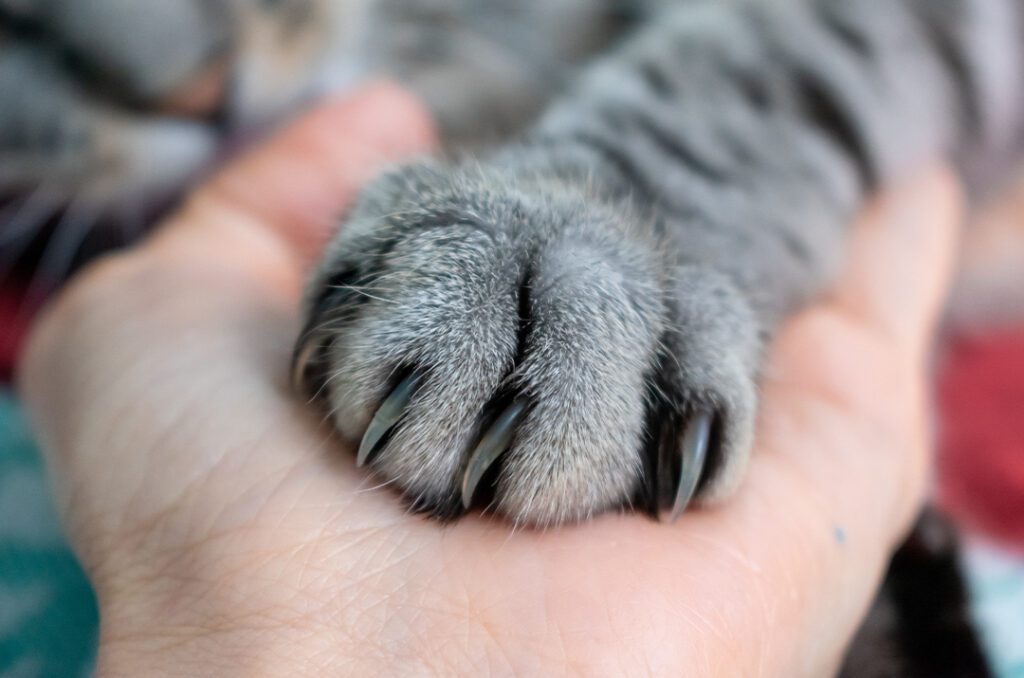
Declawing cats has been a longstanding practice in some regions, but it has garnered increasing controversy over the years due to its medical and behavioral implications. As awareness of the harm caused by declawing grows, legal actions are being taken to outlaw this procedure in many places. In this blog post, we’ll delve into the medical and behavioral issues resulting from declawing, explore the legal efforts to ban it, and discuss safer alternatives for cat owners to consider.
Medical and Behavioral Issues Resulting from Declawing:
- Physical Pain and Complications: Declawing involves the surgical removal of the last bone in a cat’s toe. This is not just like trimming nails; it is an amputation, like removing the tips of all your fingers. The process is painful and can lead to a host of physical complications such as infection, chronic pain, and lameness. Cats may also experience permanent changes that occur long after the declawing in their gait and posture, leading to further discomfort in their wrists, elbows, and shoulders.
- Behavioral Problems: Declawing can cause behavioral changes in cats. As a defense mechanism, cats may resort to biting when they feel threatened, as they no longer have their claws for protection. This can lead to aggressive behavior and strained relationships between cats and their human caregivers.
- Litter Box Avoidance: After declawing, some cats may develop an aversion to using the litter box due to the pain associated with digging and scratching. This can lead to inappropriate elimination issues and heightened stress levels for both the cat and the owner.
Legal Action to Outlaw Declawing:
In response to the growing concerns about declawing, several jurisdictions have taken legal action to ban the procedure. These actions aim to protect the well-being of cats and promote more humane alternatives. The specific details of these laws may vary from place to place, but the overall intention is to restrict declawing except in extreme medical cases where it is necessary for the cat’s health.
Safer Alternatives to Declawing:
- Regular Nail Trimming: A simple and effective alternative to declawing is regular nail trimming. Cat owners can learn how to properly trim their cat’s nails or seek assistance from a veterinarian or professional groomer. Trimming should be done carefully to avoid cutting into the quick, causing pain or bleeding.
- Scratching Posts and Pads: Provide cats with appropriate scratching posts and pads. Cats have a natural instinct to scratch, which helps them maintain their claws and mark their territory. By providing designated scratching areas, you can save your furniture while allowing your cat to engage in a healthy and natural behavior. Offer different choices, some cats like carpeted scratching posts, some like cardboard, some like horizontal ones, some like vertical ones, and then there are flat ones and round ones.
- Soft Nail Caps: Soft nail caps, such as Soft Paws, can be an excellent option for cats who are prone to scratching furniture or people. These caps are glued onto the cat’s claws and prevent damage when the cat scratches. Soft nail caps are safe and generally well-tolerated by cats and easy to apply.
Declawing cats is a controversial practice that raises serious medical, behavioral, and ethical concerns. As awareness grows about the negative consequences of declawing, more jurisdictions are taking steps to outlaw the procedure. By understanding the potential harm caused by declawing and exploring safer alternatives, we can ensure the well-being of our feline companions while maintaining harmony in our homes. Responsible cat ownership involves respecting a cat’s natural behaviors and finding humane solutions that benefit both the pet and the owner.

